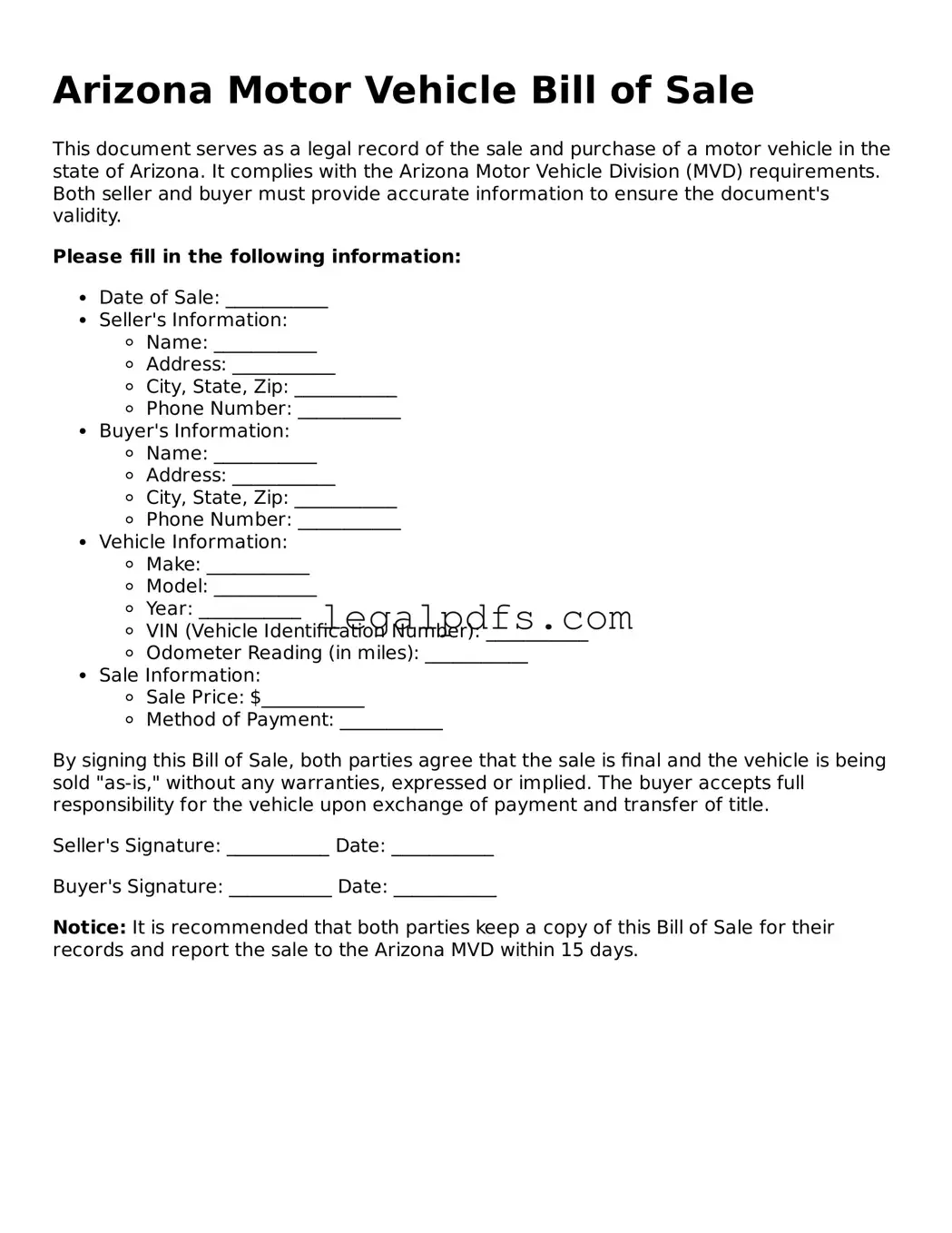What is the purpose of an Arizona Motor Vehicle Bill of Sale form?
An Arizona Motor Vehicle Bill of Sale form serves as an official document that records the sale and purchase of a vehicle within the state of Arizona. It provides evidence of the transaction, detailing information about the buyer, seller, and the vehicle itself. This document is crucial for the rightful transfer of ownership and can be used for the registration of the vehicle, tax collection, and legal protection in case any disputes arise regarding the sale.
Is the Arizona Motor Vehicle Bill of Sale form required for registering a vehicle?
Yes, in the state of Arizona, a Motor Vehicle Bill of Sale form is often required as part of the documentation for registering a vehicle. It acts as proof of purchase and sale, providing the necessary details to the Arizona Motor Vehicle Department for registration purposes. It's advisable to check the specific requirements with the local DMV, as they can vary from county to county.
What information needs to be included in the form?
The Arizona Motor Vehicle Bill of Sale form should include details such as the date of the sale, the total sale price, and specific information about the vehicle - including make, model, year, VIN (Vehicle Identification Number), and odometer reading. The form must also include the printed names and signatures of both the seller and the buyer, indicating agreement to the terms and conditions of the sale.
Can I create my own Arizona Motor Vehicle Bill of Sale form?
Yes, you can create your own Arizona Motor Vehicle Bill of Sale form, provided it includes all required details that accurately reflect the transaction. However, it's recommended to use a pre-designed template or form that complies with the state requirements to ensure all necessary information is properly documented and legally binding.
Do I need to have the Motor Vehicle Bill of Sale form notarized in Arizona?
While not all transactions require the Motor Vehicle Bill of Sale to be notarized in Arizona, it is strongly encouraged. Notarization adds an extra layer of authenticity and legal protection, verifying the identity of the signers and the integrity of the document. Before proceeding, it's best to verify whether notarization is necessary for your specific situation.
How do I obtain an Arizona Motor Vehicle Bill of Sale form?
An Arizona Motor Vehicle Bill of Sale form can be obtained through several channels. You can download a template from the Arizona Department of Transportation website, find templates online, or acquire one from a local legal stationery store. Ensure whichever form you use complies with the Arizona state requirements to avoid any potential issues during registration or the sale process.
